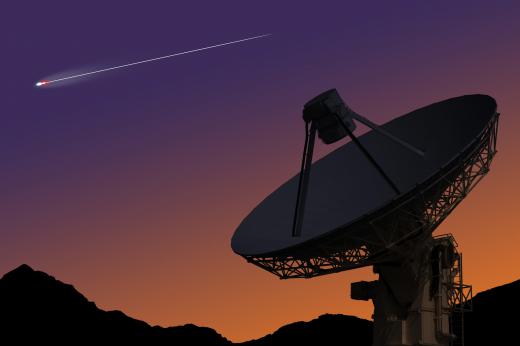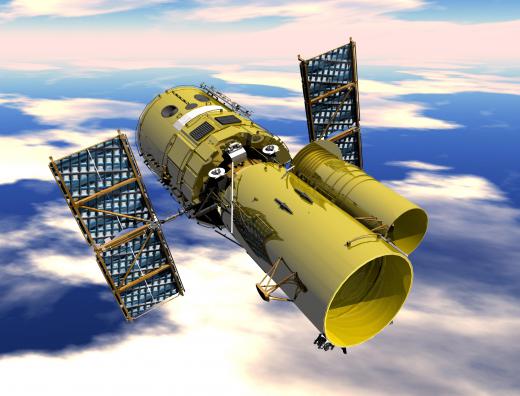What Was the First Extrasolar Planet Discovered?
 Michael Anissimov
Michael Anissimov
The first extrasolar planets discovered were a pair of rocky objects orbiting PSR B1257+12, a pulsar in the constellation of Virgo, 980 light-years from the Earth. Radio astronomers Aleksander Wolszczan (Polish) and Dale Frail (Canadian) were credited with the find, which was announced in 1992 and quickly confirmed.
As of 2007, 242 extrasolar planets are known. It is suspected that at least 10% of Sun-like stars have planets, though the actual value may be much higher. The discovery of planets orbiting PSR B1257+12 was a surprise to astronomers at the time, because these were pulsar planets, and it was generally assumed that planets only formed around main sequence stars.

The two extrasolar planets are now known as PSR B1257+12B and PSR B1257+12C. A third planet, PSR B1257+12A, which orbits closest to the star, was discovered a couple years after the others. The two larger planets are around four times the mass of the Earth. The pulsar they orbit is the remnant of a supernova. It is unknown whether these extrasolar planets were formed prior to the supernova, possibly being the rocky cores of former gas giants stripped of most their mass during the nova, or during a post-nova round of planet formation. The extrasolar planets orbit 0.36 AU (astronomical units, 1 AU is equal to the distance between Earth and the Sun) and 0.46 AU from their star, respectively.

PSR B1257+12 is a millisecond pulsar, a type of neutron star, and was discovered in 1990 by Wolszczan using the Arecibo space telescope. Irregularities in its pulse period led Wolszczan and Frail to carefully investigate the system for possible extrasolar planets. Of course, they were successful. Pulsars emit huge amounts of radiation, more than enough to fry any life on the surface of orbiting planets, so PSR B1257+12B and PSR B1257+12C are the last places we would be looking for extraterrestrial life. The pulsar is has a rotational period of 6.22 milliseconds and is 800 million years old.
Though it was not the first to be discovered, the most famous extrasolar planet is probably Gliese 581c, because of its relative proximity (20 light years), Earth-like mass, and its location within the "habitable zone" of its star, a zone which could theoretically sustain life.
AS FEATURED ON:
AS FEATURED ON:












Discuss this Article
Post your comments